
Mel from Edmonton, Alberta wrote: Fredrick Banting was a brilliant man whose work changed many lives aside from my own. He didn't invent a cure but what he did invent allowed people with diabetes to live longer, more fulfilling lives.Fredrick Banting lost his best friend at a young age to diabetes, and as a result worked to create a cure. He and his lab partner Charles Best created insulin, thanks to a borrowed laboratory, a few brave dogs, and an idea. It took 2 tries but they succeeded. In 1923 Banting won a Nobel Prize in medicine for his discovery and also in 1923 the University of Toronto inaugurated a new department called the Banting and Best Department of Medical Research. There is still no cure for diabetes but if it hadn't been for the work of Frederick Banting and Charles Best, I might not be here. I have an extremly serious form of diabetes and I am injected with insulin twice a day. I believe the insulin will keep me alive until someone discovers a cure. |
| "Had I not failed in my one year at London (Ontario), I might never have started my research work...yet it was there that I obtained the idea that was to alter every plan that I had ever made, the idea which was to change my future and possibly the future |
SCIENCE HERO:
FREDERICK BANTING
by Edward Ortiz
As Banting's practice struggled, the best and brightest physiologists of the day considered finding a treatment for diabetes close to impossible. A disease that robs the body's ability to burn body sugar for energy, diabetes forces the body to feed upon itself. Banting had a nagging hunch about what might be done. To adequately prove his hunch, Banting would have to give up his surgical practice and forge blindly into the future in a humble laboratory in Toronto. For a young physician supporting a family, this difficult decision was akin to career suicide. Debts and other financial troubles loomed for Banting. Banting loved to work deep into the night and it was on one of these that Banting was struck by an idea. He reasoned that if the pancreas was destroyed but the nearby tangle of
tubes called the Islets of Langerhans were kept intact, the absence of digestive enzymes would allow the isolation of insulin. With the help of his assistant Charles Best, Banting began
to experiment on the pancreases of dogs. Ironically, Banting was a lover of dogs ever since his farm days, and would suffer the misery of watching many dogs die for the sake of his research. Banting's goal quickly became finding a way to
isolate insulin from a dog's degenerated pancreas. Two sets of dogs were set up: those for which the pancreas would be removed and the other for which the pancreas would be purposely degenerated. The dogs with removed pancreases would show the debilitating effect of diabetes.
Results were promising as an extract of the dogs'degenerated pancreases were injected into the dogs without pancreases. The clinical condition of the dogs without pancreases improved remarkably. Hence, the discovery of insulin was born. Unfortunately, this procedure meant that many dogs had to be sacrificed to keep one diabetic dog alive. Banting called this life-saving pancreatic extract "isletin"...the name of which would later be changed to insulin. But how was Banting to secure this precious insulin without having to kill more animals than it saved? This is where Banting's background on a farm helped. Banting realized, from his experience breeding cattle, that pure insulin tissue could be extracted from the pancreases of embryonic calves. Banting and Best took to injecting themselves with insulin before testing it on their first human research subject. After establishing the safety of this crude form of insulin, Banting was ready for his first patient. In January of 1922, he injected it into a 14-year-old diabetic boy. The turnaround in his condition was both rapid and conclusive. A month later Banting would inject insulin into the veins of a childhood friend, bringing about such an improvement in his health that friends and family thought it a miracle. For his valiant effort, Banting was awarded the Nobel Prize in Medicine in 1923. He was the first Canadian to receive the award. He divided his share of the prize with his invaluable assistant, Charles Best. What is often overlooked about Banting is that he was an accomplished artist who signed his drawings and paintings with the alias "Frederick Grant". Art was his escape from the rigors of late night research and the misery of failed experiments. Banting's life came to a tragic end in 1941 on a military mission for the Canadian Army Medical Corps during World War II. Banting's plane crashed near a frozen lake in Newfoundland. An exemplary life was over at the age of 49.
It is interesting to note that Banting realized how his initial failure at a medical practice in Ontario led him on the road to a Nobel Prize. Like most heroes and discoverers, Banting showed the quality of perseverance, intuition, and courage in the face of what appeared to be insurmountable obstacles. Banting wrote in 1940: "...had I not failed in my one year at London, I might never have
started my research work..."
Nobel prize winner, accomplished painter, knighted by the queen, and a
recipient of the Military Cross for bravery during World War I, Frederick Banting
was a saver of lives.
|
| Written by Edward Ortiz Photos courtesy of The Canadian Diabetes Association and the Banting Museum and Education Centre |
*Internet Required to view links* Heroes of Lore and Yore: Dr. Frederick Banting A great web page by the National Library of CanadaNobel Internet Archive tribute to BantingDr. Frederick Banting was the1923 Nobel Laureate in Medicine The Diabetes Research InstituteMore information about diabetes. |
RECOMMENDED READING | |
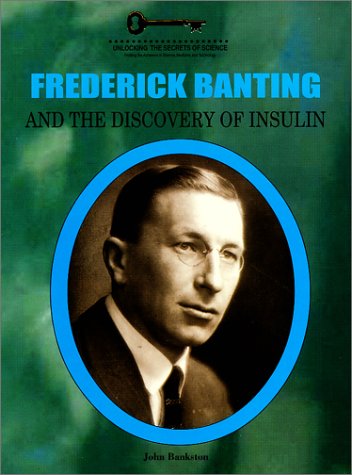 Frederick Banting and the Discovery of Insulin (Unlocking the Secrets of Science) by John Bankston |  Hero, Healer, Artist by Frederick Banting, The Quest Library |
 Science: 100 Scientists Who Changed the World by Jon Balchin | |
 |  | 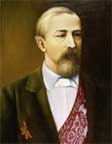 |  |
| Alan Turing laid the theoretical groundwork for the first computer. | Albert Einstein believed in the power of imagination. | Alexander Borodin was an accomplished chemist, composer and staunch advocate of women's rights. | Ameen Abdulrasool is a young inventor who developed a portable navigation system for the blind. |
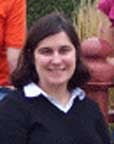 |  |  |  |
| Amy Charkowski works on the front lines of protecting Earth's food supply. | Andrea Mia Ghez is an astrophysicist best known for her discoveries about the black hole at the center of our galaxy. | Ariel Ruiz i Altaba Scientist - Photographer combines art and science to research how cells are generated and formed. | Audrey Penn: Just Do It is a medical doctor who has devoted herself to studying diseases that affect muscle control. |
 |  |  | 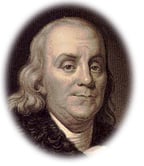 |
| Augusta Ada Byron developed the world's first computer program while struggling with her own personal hardships. | Barbara McClintock a distinguished geneticist and Nobel laureate | Ben Carson is the chief of neurosurgery at Johns Hopkins University Hospital. | Benjamin Franklin was an inventor, diplomat, writer, and a huge influence on American history. |
 |  |  |  |
| Beth Rickard Environmentalist is an advocate of solar as the energy of the future. | Charles Darwin is the father of modern biology. | Chiaki Mukai is the first female Japanese astronaut. | Christiane Nusslein-Volhard is a Nobel Prize winner and pioneer genetic researcher. |
 |  |  |  |
| Claudia Gerwin: Keeping the Neurons Firing researches how nerve cells relay messages to each other. | Clifford V. Johnson is a string theorist who studies the makeup of the smallest particles of the universe. | Connie Samaras has created media archives for deep space voyages. | Courtney Schumacher is an atmospheric scientist and educator committed to mentoring young women interested in science. |
 |  |  |  |
| Cristina Diaz: Biologist studies intertidal and tropical sponges. | Dame Cicely Saunders founded the modern hospice to provide compassionate, holistic care to the dying. | Darlene Ketten studies stranded whales and dolphins. | Debbye Turner became Miss America and pursued her dream to become a veterinarian. |
 |  |  |  |
| Dilfuza Egamberdiyeva Environmental Microbiologist cares for the Earth's soil, researching ways to produce microbes to control plant diseases. | Dr. Alexander Langmuir Langmuir's work in epidemiology has saved millions of lives. | Dr. Barbara Ross-Lee became the first African American woman dean of a US medical school. | Dr. Caldicott has been a lifelong anti-nuclear activist. |
 |  |  |  |
| Dr. Edward Jenner discovered the vaccine. | Dr. Elizabeth Kalko and the Jason Project studies bats in the Panamanian rainforest. | Dr. Elvia Niebla Soil Scientist is dedicated to soil conservation. | Dr. France Cordova is a renowned astrophysicist who has broken gender and cultural barriers. |
 |  |  |  |
| Dr. Gloria WilderBrathwaite was inspired to provide health care to the poor in the innner city. | Dr. Govindappa Venkataswamy cares for the eyes of millions of people in India. | Dr. InÚs Cifuentes Seismologist works to improve science programs for students in Washington, DC. | Dr. Karen Plaut has been a pioneer in animal science research. |
 |  |  |  |
| Dr. Kay Jamison is both an expert on, and a sufferer of, Bipolar Disorder. | Dr. Kristi Curry-Rogers is an accomplished paleontologist who travels the globe in search of dinosaur digs. | Dr. Michael DeBakey is the father of modern open-heart surgery. | Dr. Patch Adams gives the practice of medicine a humorous twist. |
 |  |  |  |
| Dr. Richard Murphy Marine Biologist educates others about the sea and ways to protect the oceans for the future. | Dr. Robert Ballard and the JASON project bring scientific exploration to children around the world. | Dr. Rosalie Bertell Anti-Nuclear Nun is a renowned scientist, eco-feminist and peace activist. | Dr. Sara W. Lazar Neuroscientist - Meditator researches the effects of meditation on the brain. |
 | .jpg) |  |  |
| Dr. Sue Savage-Rumbaugh is a scientist dedicated to the study and conservation of bonobos. | Dr. Susan Love is committed to women's health issues. | Dr. Zeda Rosenberg is working to provide women with a way to protect themselves from contracting HIV/AIDS. | Enrico Fermi was one of the 20th century's greatest physicists. |
 |  |  |  |
| Erich Jarvis observes song birds and uses his training with molecular biology to learn about brain behavior. | F. Sherwood Rowland discovered the 'greenhouse effect.' | Fati Kirakoya: L'Oreal-UNESCO, Women in Science Fellow is a researcher committed to helping find solutions to end the AIDS crisis. | Frederick Banting was the co-discoverer of Insulin. |
 |  |  |  |
| Friends of the Sea Lion rescue, treat, and release these mammals back into the ocean. | Gail Kaaialii: Biologist investigates the origins of life and helps others value all life forms. | Galileo was the first to use a telescope to observe the stars and planets. | George Washington Carver is famous for experimenting with plants. |
 |  |  | 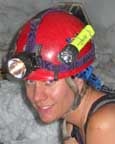 |
| Gertrude B. Elion developed the AIDS drug, AZT. | Gina Gallant is an inventor whose passion is protecting the environment. | Grace Murray Hopper was a computer visionary. | Hazel Barton combines her passion for caving with researching microbes. |
 |  |  |  |
| Irene Ayako Uchida helped find the link between radiation and birth defects. | Irene Curie specialized in nuclear physics, the science of studying the nucleus of the atom. | Jack St. Clair Kilby invented the microchip. | Jane Mt. Pleasant is an agricultural scientist who looks to the past to meet today's farming needs. |
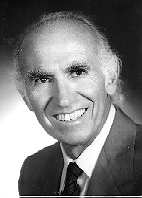 |  |  |  |
| Jonas Salk discovered the polio vaccine. | Kathy Sullivan was the first American woman to walk in space. | Leonard Adleman improves lives with his work in DNA technology. | Leonardo da Vinci was an artist and a scientist ever curious of the world around him. |
 |  |  | 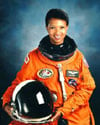 |
| Louis Pasteur 's discoveries advanced the practice of medicine. | Luz Maria Rodriguez-Fernandez conducts cancer research to help understand the disease process. | Madame Curie received the Nobel Prize for her discovery of Radium. | Mae Jemison dreamed of going to space since childhood. |
 |  |  |  |
| Magdalena Hurtado is an anthropologist who studies the Ache people of Paraguay. | Marie Curie discovered radioactivity as an atomic property, opening the door to 20th century science. | Meenakshi Wadhwa studies meteorites and the processes involved in their formation. | Nikola Tesla was the father of many modern inventions. |
 |  |  |  |
| Orville and Wilbur Wright were brothers determined to build a better flying machine. | Paul Farmer has dedicated his life to treating people in the poorest nations in the world | Paul Munsen Solar Oven Man manufactures sun ovens, which harness the sun's rays to provide an environmentally safe source of energy. | Paul Sipiera led an expedition into Antarctica to find meteorites for NASA. |
 |  |  |  |
| Philo T. Farnsworth ,the inventor of the television. | Robert Koch was an important medical researcher of the 19th century. | Rokhaya Gueye treats malaria and raises awareness about women's health issues in Senegal. | Shannon Hackett studies the genetic diversity and evolution in tropical birds. |
 |  |  |  |
| Sir Alexander Fleming : his discovery of penicillin saved millions of lives. | Srinivasa Ramanujan made groundbreaking contributions to mathematics. | Stephanie Jenouvrier UNESCO-L'Oreal Women in Science Fellow is a population ecologist researching the effects of climate change on emperor penguins. | Stephen Hawking is a renowned theoretical physicist who writes about 'black holes'. |
 |  |  |  |
| Tania Ruiz is an astrophysicist committed to science education and helping women reach their goals. | Thomas Alva Edison holds the record for number of patents filed. | Tom Chau Biomedical Engineer uses science and technology to maximize opportunities for people with disabilities. | Tom Dibblee is a legendary geologic mapper. |
 |  | 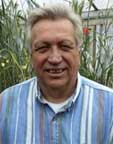 |  |
| Usha Varanasi is the first woman to lead a Fisheries Science Center. | Vladimir Kosma Zworykin is called 'The Father of Television'. | Wes Jackson was a professor who returned to the land to advance sustainable agriculture practices. | Wilson Bentley was the first person to photograph a single snowflake. |
 |  | ||
| XIV Argonauts broadcasted their explorations of the Channel Islands. | Zohra Ben Lakhdar is a physicist from Africa who does research on atomic spectroscopy. |
Last changed on: 6/7/2004 2:16:48 PM
|
angel | animals | artists | business | child | community | earthkeepers |explorers | faith | family | freedom | lifesavers | literary | musician | heroes in the news | peacemakers | poets | scientists | sports | teachers | women | writers |
 Frederick Banting never knew he was on the road to saving countless lives
as he worried over the empty waiting room of his humble surgical practice
in London, Ontario. He was an unknown entity in London and patients were
few. What he did know was that he had a nagging interest and several
ideas concerning a fatal disease--diabetes. Banting's failure would lead him on the road to identifying insulin--the
life-saving hope of all diabetics, and a Nobel Prize in Medicine. Ironically, his success would be achieved in a discipline not of his choosing.
Frederick Banting never knew he was on the road to saving countless lives
as he worried over the empty waiting room of his humble surgical practice
in London, Ontario. He was an unknown entity in London and patients were
few. What he did know was that he had a nagging interest and several
ideas concerning a fatal disease--diabetes. Banting's failure would lead him on the road to identifying insulin--the
life-saving hope of all diabetics, and a Nobel Prize in Medicine. Ironically, his success would be achieved in a discipline not of his choosing.